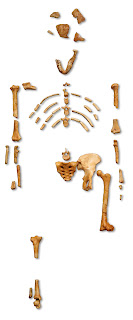157 years ago today Charles Darwin’s On the Origin of Species was published, his theory of evolution had entered the public domain for the first time. Reactions were strong.
Darwin’s theory questioned intelligent design and purpose in nature; to accept his theory meant questioning religious scriptures. Not surprisingly, fundamentalist Christians hated it. But a surprising number of believers fit it into their existing religious views, through what is termed “theistic evolution.” Like many religious people today, they didn’t take the bible literally, but as a set of metaphors.
People often see Darwin’s theory as antithetical to the notion of a creator, and modern atheists use acceptance of it as a lynchpin of rational pro-science secularism, but Darwin himself stated in the conclusion of the book:
“…probably all the organic beings which have ever lived on this earth have descended from some one primordial form, into which life was first breathed by the Creator.”
That’s right, militant atheists, Darwin was not one of you, he practiced theistic evolution. He said he had “no intention to write atheistically” andadmitted he couldn’t bring himself to “view this wonderful universe and especially the nature of man” and conclude that “everything is the result of brute force.”
The theory did undermine religious authority and gave people alternative answers to how things came to be, however, leading to more atheism. It also opened up discourse around many things that people didn’t think to question. The most famous formal debate happened seven months after publishing, at Oxford. The participants included Thomas Henry Huxley, who was known as “Darwin’s bulldog” for being such a ferocious defender and promoter of his theory. One person on the anti-evolution side was Bishop Samuel Wilberforce.
Huxley and Wilberforce had famously cutting and insulting exchanges in the debate. A report from The Morning Chronicle had Wilberforce asking why “anyone would be so jubilant that his great great grandfather was an ape or a gorilla.” It was also recounted in an October 1898 issue of Macmillan’s Magazine that he turned to Huxley “with a smiling insolence, he begged to know, was it through his grandfather or his grandmother that he claimed his descent from a monkey?” to which Huxley replied “He was not ashamed to have a monkey for his ancestor; but he would be ashamed to be connected with a man who used great gifts to obscure the truth.” A woman was said to have fainted as a result of that sick burn.


